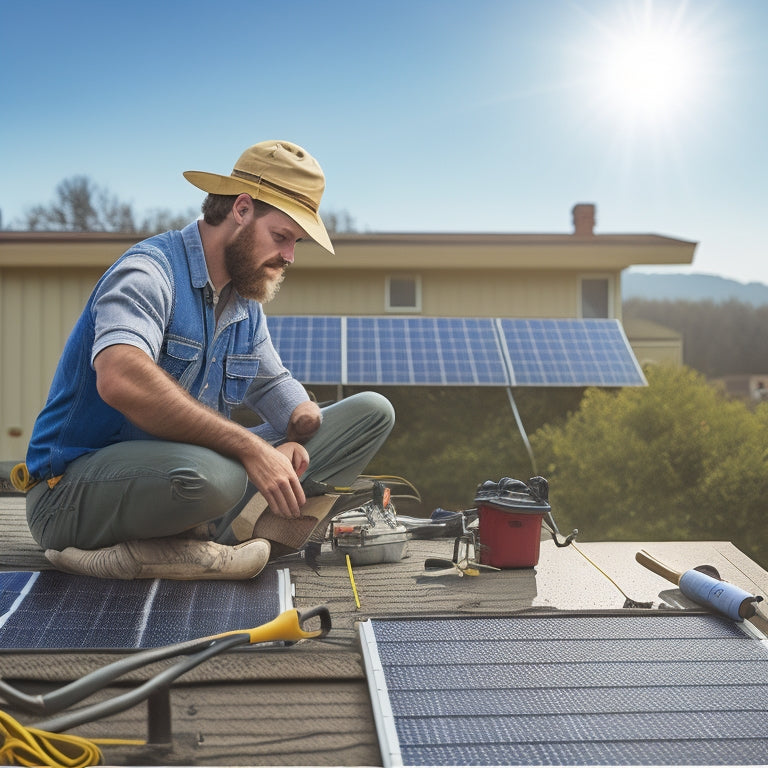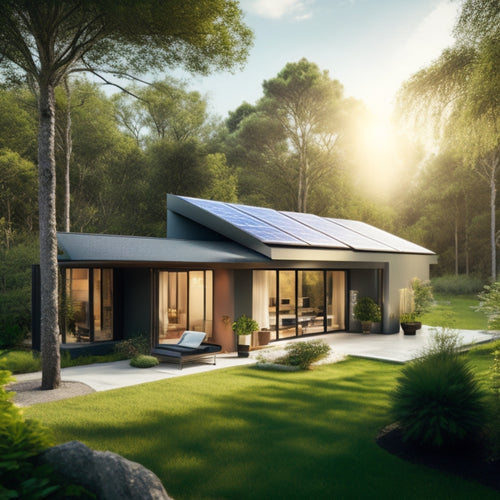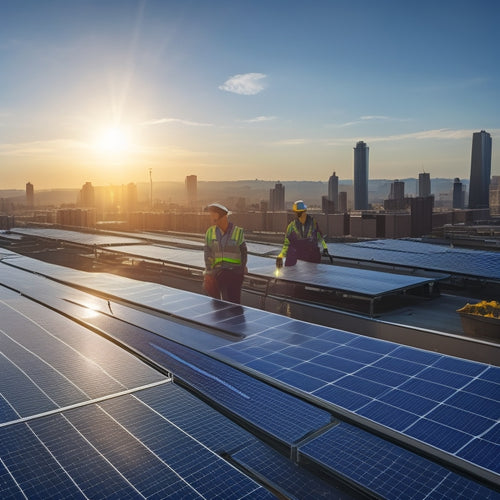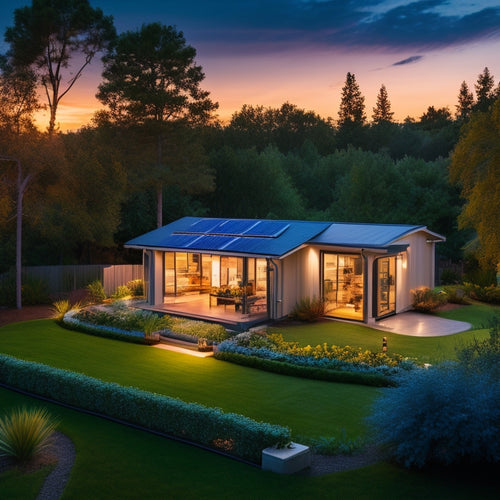
Why DIY Solar Panel Installation Costs More
Share
DIY solar panel installation can end up costing more because of several reasons. You'll need specialized equipment and tools, which can cost between $500 and $1,500. Permits and regulations add another $100 to $500, and mistakes can lead to fines. The time investment is significant, often taking much longer than professional installations. There's also a high risk of errors, which can lead to efficiency and safety issues. Additionally, DIY installations may void manufacturers' warranties, leaving you with large unforeseen expenses. To understand all the factors affecting costs, including hidden ones, there's more to take into account.
Key Takeaways
- DIY installation requires purchasing specialized tools and equipment, adding significant upfront costs.
- Permit fees and the complexity of the application process can lead to additional expenses.
- Errors in DIY installations can result in costly repairs and reduced system efficiency.
- Lack of professional warranties and support may lead to expensive out-of-pocket repairs.
- Time investment in learning and troubleshooting DIY installations adds indirect costs.
Equipment and Tools
https://www.youtube.com/watch?v=jSa1tvrrFZg
To properly install a DIY solar panel system, you'll need a range of specialized equipment and tools that guarantee both efficiency and safety. The core components include solar panels, inverters, mounting systems, wiring, and batteries if you're opting for off-grid solutions. Each piece plays an important role, and without the right tools, you risk compromising your system's performance and longevity.
Investing in high-quality tools is non-negotiable. You'll need a multimeter to test electrical connections, a drill with various bits for mounting, and a torque wrench to make sure all connections are secure. Additionally, safety gear, such as insulated gloves and a harness, is essential to protect yourself during installation.
Tool costs can add up quickly; expect to spend anywhere from $500 to $1,500 on essential equipment alone.
While the initial investment might seem steep, consider the long-term benefits. Owning these tools liberates you from hiring professionals for future maintenance or expansions. Plus, mastering their use empowers you, giving you control over your energy production.
However, this upfront cost is a significant part of why DIY solar panel installation might be more expensive than anticipated.
Permits and Regulations
After securing the necessary tools and equipment, you must navigate the permits and regulations that govern solar panel installations in your area. Regulatory compliance isn't just a formality; it's important to guarantee your system is safe and up to code. Depending on where you live, you'll encounter various requirements that may include electrical, building, and zoning permits.
Permit fees can vary greatly, typically ranging from $100 to $500, but they can be even higher in some regions. These fees add to your upfront costs and should be factored into your budget from the start.
Additionally, the application process can be complex and time-consuming, often requiring detailed plans, inspections, and possibly revisions to meet local codes.
Navigating these regulations on your own can be challenging. Mistakes or oversights may result in fines or the need to redo parts of the installation, further increasing costs. In contrast, professional installers usually handle all permitting for you, streamlining the process and ensuring compliance with all local regulations.
Therefore, while DIY might seem like a route to savings, the intricacies of permit fees and regulatory compliance can make it more expensive and stressful than anticipated.
Time Investment
Installing your own solar panels requires a significant time investment, often underestimated by DIY enthusiasts. The time commitment goes beyond the physical installation; it includes extensive research and planning. You'll need to understand electrical systems, panel specifications, and local climate considerations. This learning curve can be steep, especially if you're new to solar technology.
The initial phase involves dedicating hours to studying how solar panels work and identifying the best setup for your home. You'll also spend time sourcing materials and tools, followed by reading manuals and watching tutorials. Even with a solid grasp of the basics, the actual installation process can take days or even weeks, depending on your availability and skill level.
Furthermore, troubleshooting issues and ensuring top performance require additional time. Every hour you spend on these tasks translates to potential lost income or missed opportunities for other productive activities. While professional installers often complete the job within a day or two, your DIY project might extend considerably, impacting your daily routine.
In essence, the time commitment for DIY solar panel installation is substantial. Factoring in the learning curve and ongoing adjustments, it's clear that your time holds considerable value, making professional installation a more cost-effective option in many cases.
Risk of Errors
Even with meticulous planning, DIY solar panel installation carries a high risk of errors that can compromise system efficiency and safety. You might think you're saving money upfront, but installation errors can lead to costly fixes later. Misaligned panels, incorrect wiring, and poor mounting are common mistakes. Each of these errors can drastically reduce the efficiency of your solar system, diminishing the returns on your investment.
Additionally, safety hazards are a significant concern. Electrical work involves inherent risks, like the potential for electric shock or fire if components are improperly connected. The weight and placement of solar panels can also pose physical dangers during installation. Falling from a roof or mishandling heavy equipment can result in serious injury.
The cost analysis becomes clear when you consider the potential for these issues. Professional installers are trained to avoid these pitfalls, ensuring your system operates at peak efficiency and remains safe.
While DIY might seem liberating, the financial and safety risks associated with installation errors make professional installation a more prudent choice. By opting for expertise, you secure not just your investment, but also your peace of mind.
Warranty Issues
When you install solar panels yourself, you risk voiding the manufacturer's warranty, which can lead to significant out-of-pocket expenses if something goes wrong. Many manufacturers stipulate that only certified professionals should handle the installation to guarantee warranty coverage. By bypassing professional installation, you could lose essential manufacturer support, leaving you financially responsible for any repairs or replacements.
The cost implications are substantial. Without warranty coverage, any malfunction or damage, such as inverter issues or panel defects, falls squarely on your shoulders. Professional installers not only guarantee compliance with manufacturer guidelines but also offer their own warranties, providing an additional layer of protection. This dual warranty system creates a safety net, reducing potential financial risk.
Additionally, manufacturer support can be pivotal for troubleshooting and maintenance. When you DIY, you miss out on this expert assistance, which can be invaluable for long-term system performance. The initial savings from a DIY approach can quickly evaporate if you encounter issues not covered by a voided warranty.
Ultimately, while the allure of DIY solar installation might seem liberating, the potential costs from voided warranties and lack of manufacturer support can outweigh the initial savings, making professional installation a more cost-effective choice in the long run.
Frequently Asked Questions
How Do DIY Solar Panels Impact Property Insurance?
DIY solar panels can impact your property insurance by introducing coverage limitations and liability concerns. Without professional installation, insurers might limit coverage, leaving you responsible for damages or malfunctions, ultimately increasing your financial risk.
Are There Tax Incentives for Installing Solar Panels Myself?
Investigate whether you'll qualify for tax rebates and federal incentives if you install solar panels yourself. DIY projects might not meet professional standards, risking eligibility for these financial benefits and impacting your overall cost analysis.
What Is the Lifespan of Diy-Installed Solar Panels?
DIY-installed solar panels typically last 20-25 years, but maintenance requirements and warranty concerns can impact their longevity. Without professional installation, you might face higher costs and risks, compromising your investment and potential savings.
How Does DIY Installation Affect Home Resale Value?
DIY installation can impact your home's resale value. Installation errors, lack of professional warranties, and potential code violations can deter buyers. The resale impact often results in lower offers, as prospective buyers prefer professionally installed systems.
Can I Connect DIY Solar Panels to the Grid Easily?
You can connect DIY solar panels to the grid, but ensuring grid compatibility and meeting regulatory requirements can be demanding. It's essential to analyze costs and potential savings to determine if it's worth the effort.
Related Posts
-

Top-Rated Solar Storage Solutions for Homeowners
When considering top-rated solar storage solutions, you're looking at systems that provide energy independence and si...
-

Solar Installation Guide for Commercial Properties
Implementing solar energy solutions in your commercial property can lead to significant long-term savings and sustain...
-

Solar Power Backup Solutions During Outages
Solar power backup solutions guarantee you have reliable energy during outages, providing essential power when the gr...


